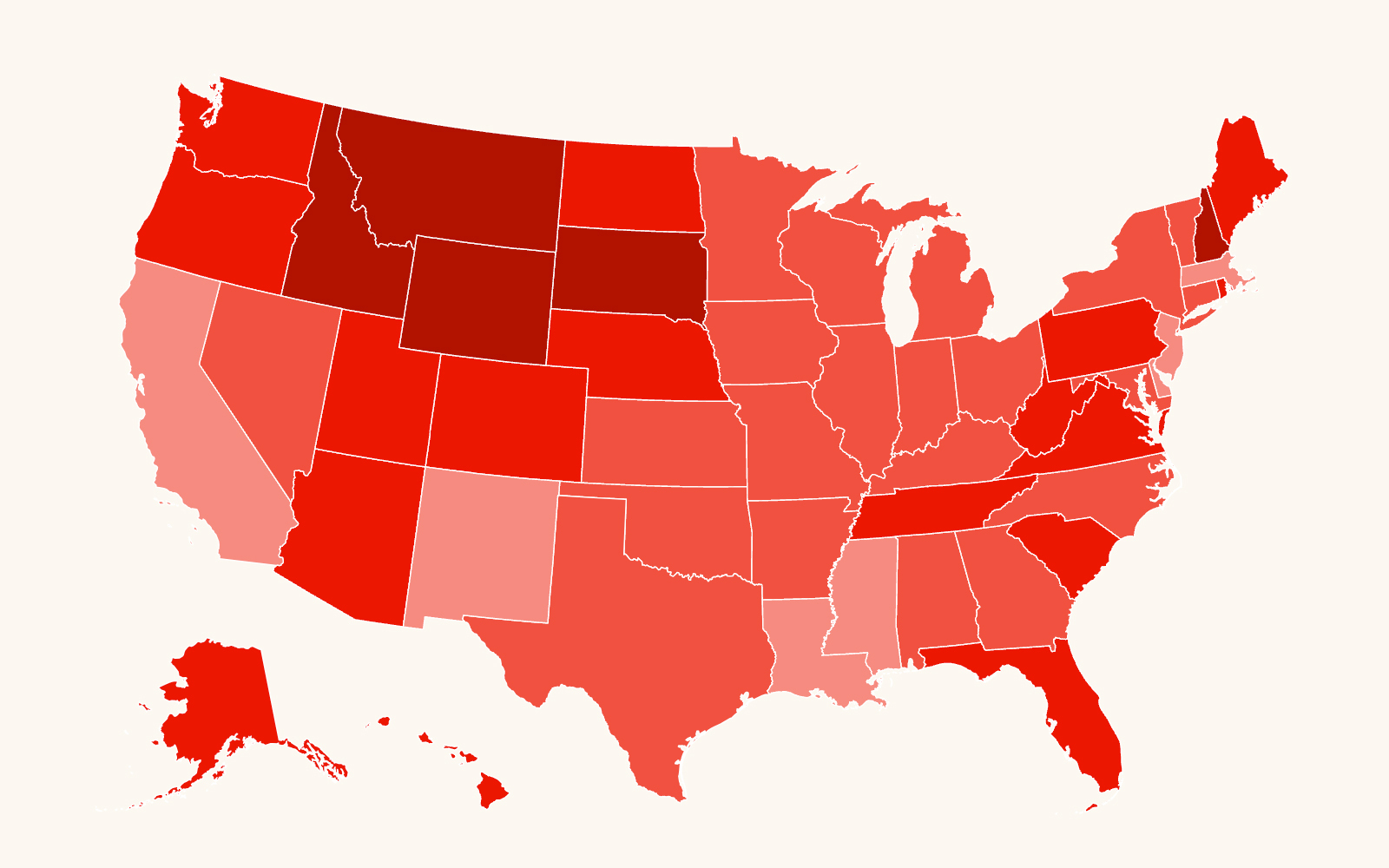Editor’s note: This is the second story in the “Cuts & Consequences” series about the effects that federal spending reductions would have on people living in the Deep South.
The path Sanquinn Jackson and his daughter followed from day care to Head Start began as a “dark before the dawn” story.
Jackson’s daughter came home one day from a short-staffed, privately run center she attended in Columbus, Georgia, with more bruises than her parents thought “normal.” She cried when she was dropped off and stood by the window waiting for one of her parents to pick her up. Her autism kept her from verbalizing her complaints, but the signs were clear that she was miserable.
“We felt so bad leaving her there, then one day she wasn’t feeling well and came home with feces in her toenails and fingernails,” Jackson said. “My girlfriend and I ended day care that day.”
Jackson enrolled his daughter in Early Head Start — a federally funded program that provides comprehensive services to low-income pregnant people, infants and toddlers, and their families — last summer around the same time she was diagnosed with autism.
She was placed in a specialized curriculum for young children with autism. Though Jackson’s daughter does not yet speak or play directly with classmates, she is trying with help from three teachers — for a class of approximately eight children. He said she has thrived under the program.
Then the 2024 elections happened. Consequently, the program’s future is unclear.
40Mnumber of children from families with low incomes served by Head Start since it was established in 1965
Although Head Start has been a boon to millions, the Trump White House announced in late February that 18% of the Administration for Children and Families (ACF) staff responsible for child care, early childhood development and Head Start programs around the country would be cut. The administration also fired the director of the program’s monitoring staff.
The ACF administers Head Start under the U.S. Department of Health and Human Services (HHS). Since staff firings across the government were announced, including up to 5,200 at HHS, they have been the subject of pitched court battles.
Head Start program administrators and parents fear that the Trump administration will reduce funding or, worse, eliminate the program altogether through executive actions in order to circumvent Congress. The U.S. Senate’s proposed fiscal year 2025 budget increases Head Start funding by $700 million, according to the National Head Start Association (NHSA), the program’s advocacy group, but the funding bill Congress passed March 14 calls for $750 million in cuts to Head Start programs.
“These cuts will be devastating,” said Mike Tafelski, interim deputy legal director of the Southern Poverty Law Center’s Democracy: Education and Youth litigation team. “Intensive preschool programs like Head Start are essential for children and their educational success in our communities. They improve literacy outcomes and reduce arrest rates. Cutting expenditures to Head Start will only compound the costs to our legal and educational systems as literacy rates suffer and arrest rates increase.”
For some, the effects would be more immediate — and closer to home.
“If Head Start were to close, my girlfriend would no longer be able to work, and my daughter would regress,” Jackson, a librarian, said. They would not be alone. Hundreds of thousands of Head Start families like Jackson’s would suddenly face life-changing circumstances, especially in states like Georgia, Alabama, Mississippi and Florida, which are among the 10 that rejected Medicaid expansion.
Hurting the working poor
“Georgia is ranked among the worst states in the country on access to behavioral and mental health services,” said Troya Jackson, director of navigator services at Atlanta-based Families First Inc., which provides intensive case management to families with chronic lack of housing, child care, transportation and food insecurity. “Cuts to Head Start would definitely impact female-led households who might not be able to work and provide for their families causing a trickle-down effect.”
Mothers like Tarryn McClinton, whose young son and daughter attend a Columbus, Georgia, all-day Head Start, would have to choose between care for their loved ones or working to pay for their care.

(Credit: David Naugle)
“I couldn’t do the job I have now,” said McClinton, 28. She has been self-supporting for the past two years, but is on call all day as a Lyft driver. “My children’s father travels a lot for his job, and he’s not around as much as he’d like to be to help. Everyone in my ‘village’ works, including my parents, so there’s no one around to drop them off or pick them up from regular day care, where they wouldn’t get the education and services they do at Head Start. I’d have to find remote work or be able to bring them with me to my job. Or I’d have to make deliveries overnight, which isn’t the safest time to do it, and pay someone to watch them or take them to grandma and grandpa.”
McClinton’s Early Head Start program found resources to pay for her son’s speech therapy when he was 2 and a half years old. When her car engine broke down in 2023, Head Start facilitated support to cover half of her $2,000 mechanic’s bill. The program pays for her training to become a pediatric medical assistant. Someday, she’d like to earn a master’s degree in psychology.
“If I had to study and do my homework with the kids at home, it would be difficult to focus and manage my two toddlers,” she said. “I probably wouldn’t get enough sleep.”
Warning signs
As recently as 2023, Congress passed the Head Start Expansion and Improvement Act, which expanded Early Head Start for families with income below 138% of the federal poverty level. Income thresholds and other qualifications for both programs vary.
Last year, Congress allocated more than $12 billion to HHS for Head Start programs. They are considered among the government’s most successful due to a wide array of societal benefits, including higher levels of education, higher incomes and better health among people who attended the program as children.
The program has served more than 40 million racially diverse children from families with low incomes since it was established in 1965.
One family in the Delta region of western Mississippi said they could not have survived if it were not for the services Head Start offered.
J.D. and her husband live with their four daughters and one son, ages 3 to 16. As children, both parents attended the Head Start preschool program, designed for children from 3 to 5 years old, as did their four daughters.
Today, their 3-year-old son is carrying on the family tradition. Head Start arranged attention-deficit/hyperactive disorder testing for him. Now he is receiving a tailored curriculum to optimize his learning and speech therapy. When his teachers noticed that he was squinting in class, they arranged vision testing. He now has eyeglasses courtesy of Head Start.
Years ago, when the couple struggled financially for a two-and-a-half-year period, their children’s Head Start program paid their rent, utilities and gas expenses while their daughters received elementary school readiness and social, emotional, mental and physical health services.
“At the time, there was nothing we could do to pay our bills, so we reached out [to Head Start] a lot, and they helped us a lot,” said J.D., who requested anonymity for this article. “If I hadn’t had the help, I honestly don’t know what we would have done. Head Start sent my girls home many nights and weekends with sandwiches and little snack treats to hold them over.”
The first Trump administration tried to reduce Head Start’s 2018 funding by $85 million. But in a bipartisan agreement, Congress responded, allocating $610 million more than the year before.
However, with conservative majorities in both houses of Congress, it is impossible to ignore the new administration’s slash-and-burn approach to federal agencies and programs. Project 2025, the 900-page right-wing policy blueprint that The Heritage Foundation created in anticipation of a second Trump administration, calls for the elimination of Head Start on Page 482.
Despite all of that planning and daunting odds, the fight against the administration’s plans continues.
When the government abruptly froze payments to Head Start centers around the country on Jan. 28, federal and state administrators frantically tried to avoid program closures and feared it was the beginning of the end for the program. The freeze became a viral news story. The next day, the federal Office of Management and Budget (OMB) reversed the freeze. Several days later, OMB issued a statement saying that Head Start was excluded from the freeze. Some centers reported delays receiving their funding until Feb. 20.
Katie Hamm, who was appointed by former President Joe Biden as deputy director of the ACF and who served until Jan. 20, said she sees the late February staff firings as the first step in the administration’s insidious, strategic plan to bypass Congress, closing the program under the guise of eliminating inefficiency and waste.
“For 60 years, Head Start has been the gold standard for the physical development of children,” Hamm said. “Cuts in staffing slow down grant awards, and the program can’t sustain funding delays. It seems like an attempt to shrink and starve the program.”
On March 6, Head Start’s Facebook page, which allowed comments, was discontinued. Like many other government-run webpages, the ACF website has been scrubbed of information that had been previously available.
Tears of progress
At Head Start, Sanquinn Jackson’s daughter receives on-site speech therapy once a week, and her parents pay for a second independent speech therapist and occupational therapist once or twice a week.
“She used to stand adjacent to the kids when they ran around because she needs her space, even with us, but now she gets in there with the other kids,” Jackson said. “She misses social cues. Because she can’t speak, instead of telling them what she wants, she pushes and pulls them trying to play. So they are all still learning. At Christmastime, the teachers made videos of the kids. I could see them interacting with her, and they definitely want to be her friend.”
He also said his daughter loves her teachers.
Jackson paused before telling his favorite story about his daughter’s progress.
“I may cry,” he said before continuing.
“She would come home singing a song, and we would mimic the song back to her even though we couldn’t understand what she was trying to say,” Jackson said.
They asked the teacher the name of the song; it was “Good Morning Song” from the YouTube channel Gracie’s Corner.
“Before, she would just look at us when we sang,” he said. “But after we knew the words, for the first time, when she looked at us, we could tell that she knew that we knew what she was singing.”
Illustration at top by Katie Martin.




